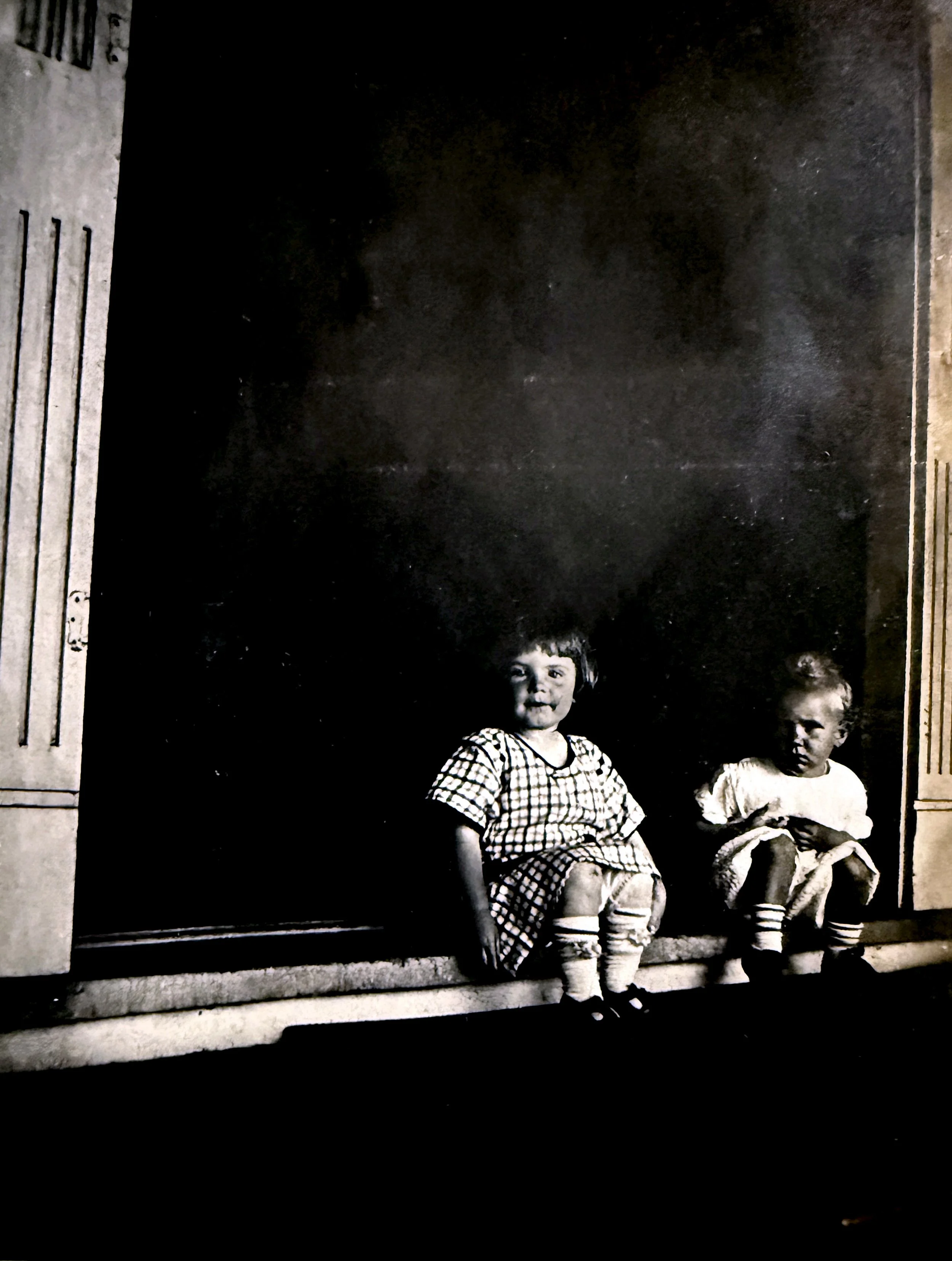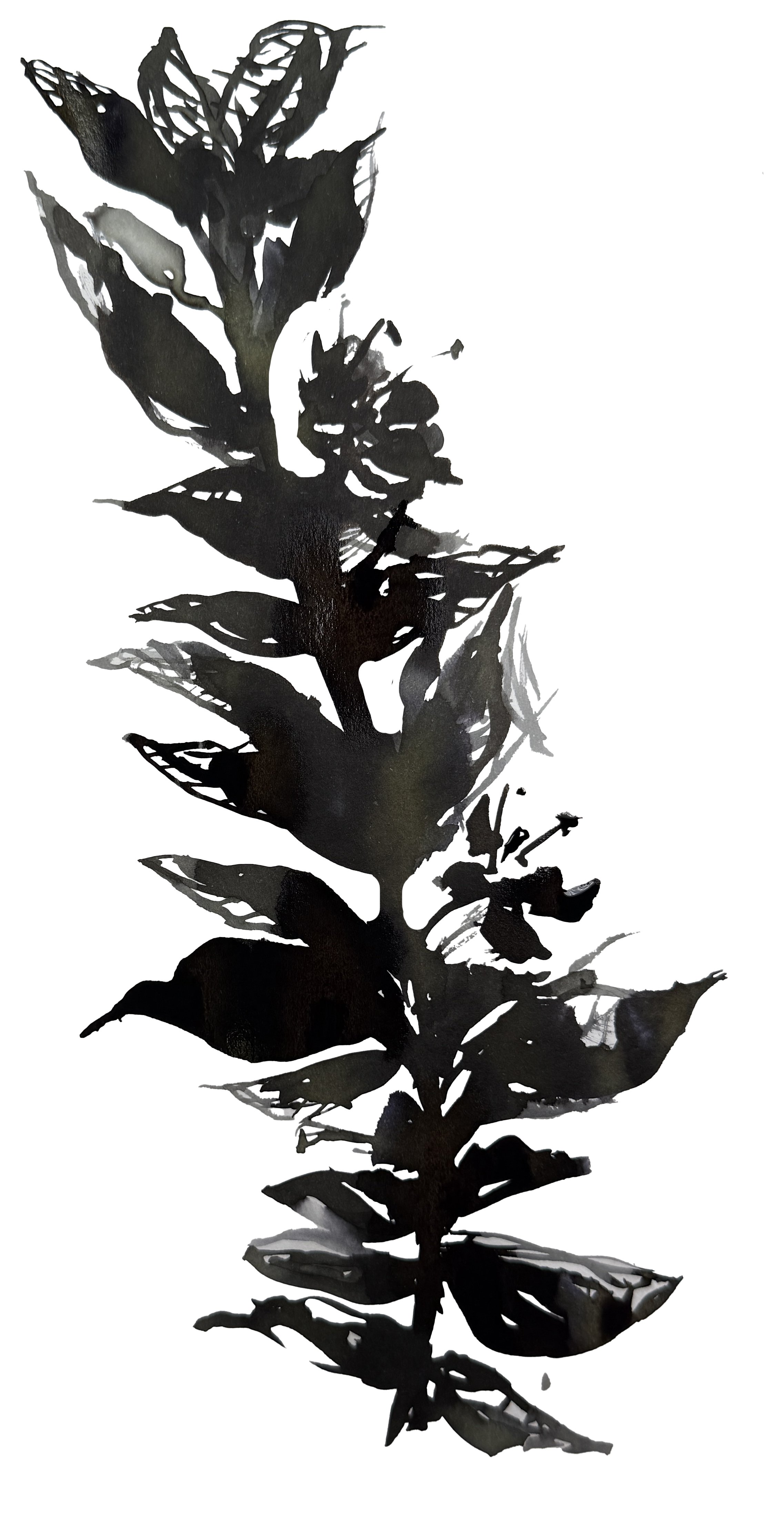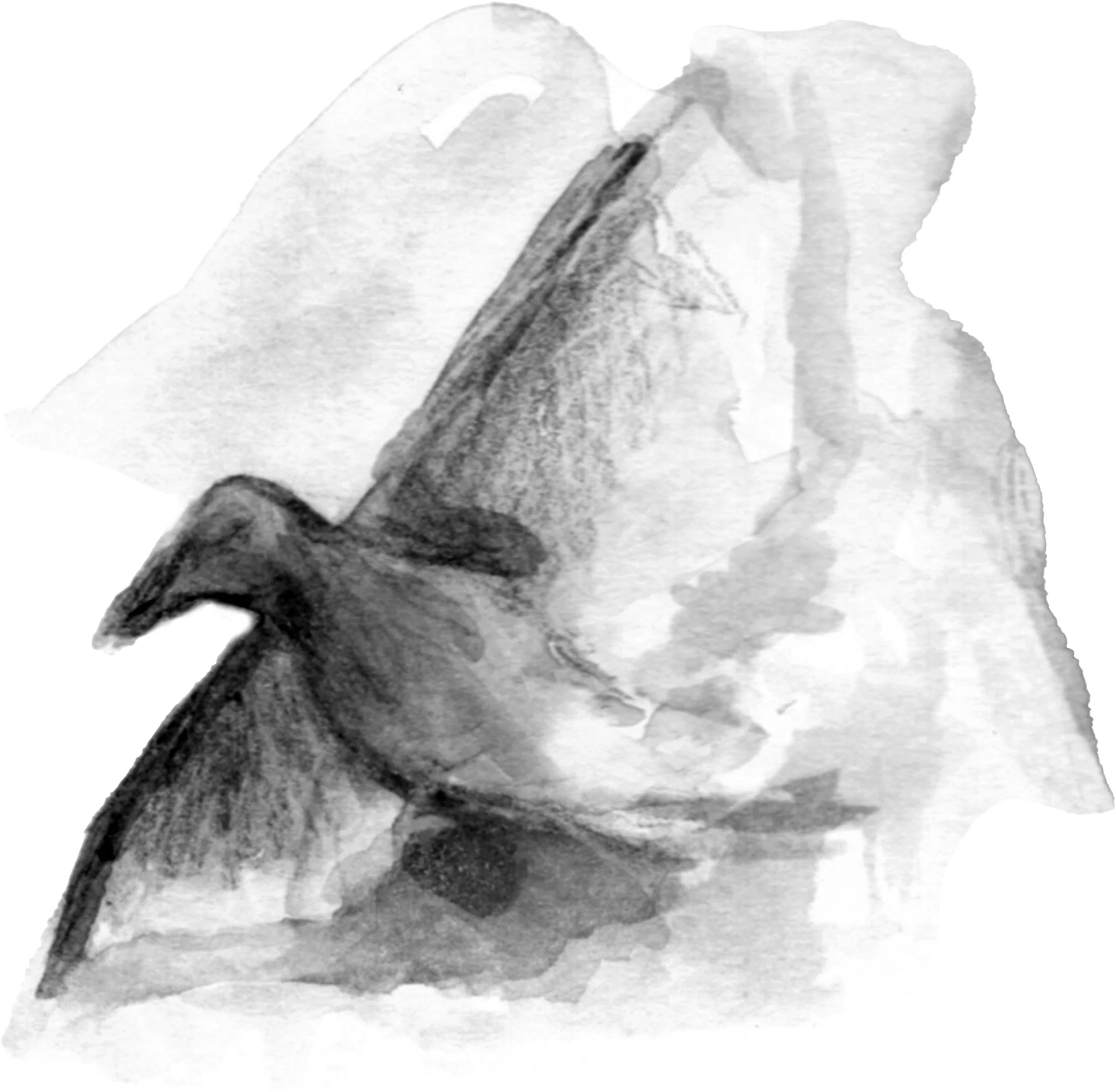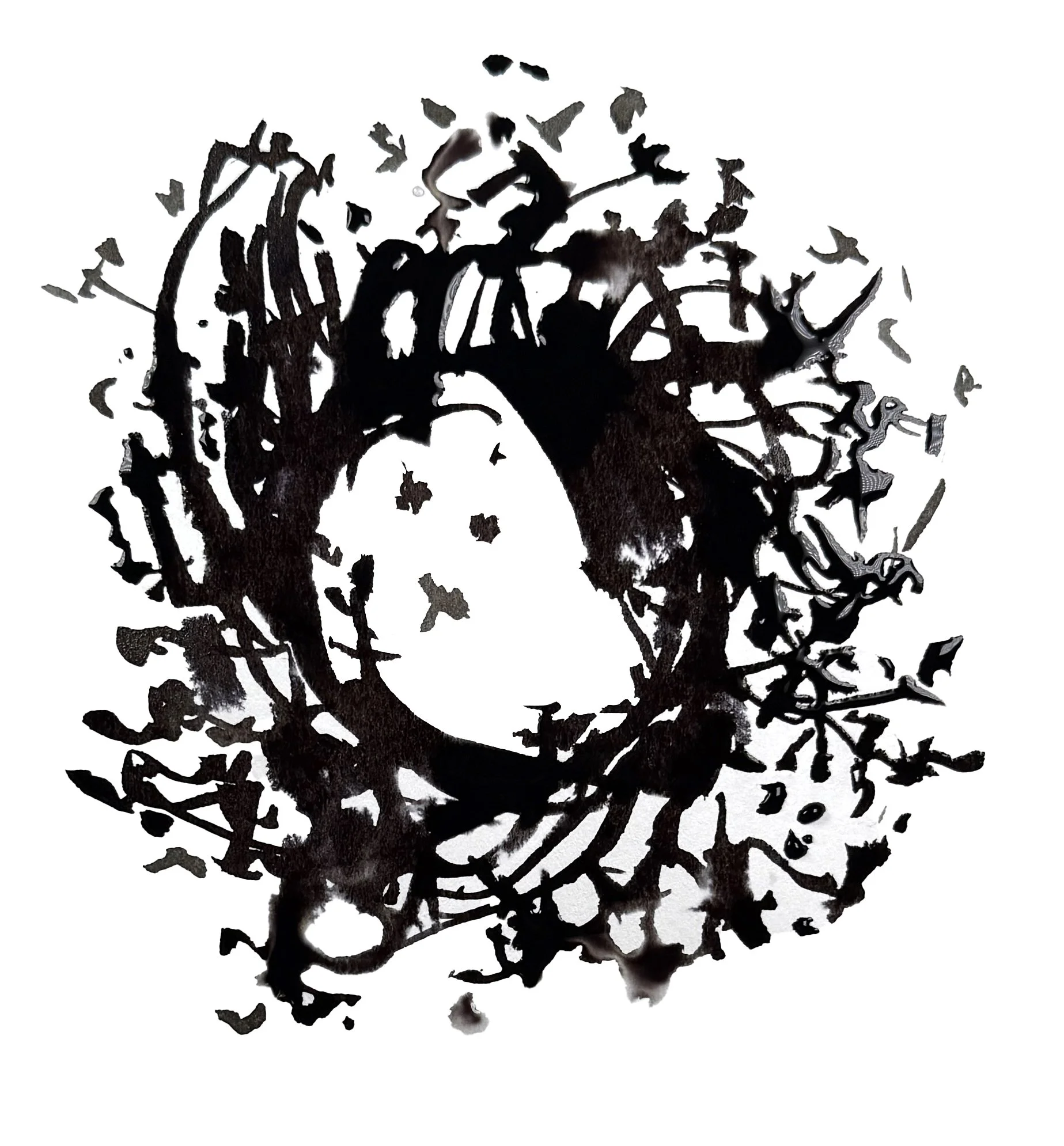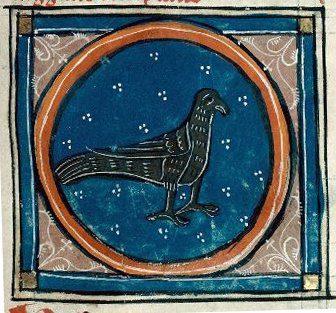Book of Trees: Blackbird Spells
A secret brothel // blackbird’s botanical magic // making crow friends // how to make wreaths // the power of identifying patterns.
The Crooked Branch (part 3) This series of Book of Trees traces a legacy of whispers and shadows.
THE MYSTERY:
Before you read this chapter, please consider reading the previous entry to get the full context without spoilers.
Quick recap: My peculiar mother hid things in boxes, secreted under an 18th-century house in the woods, with a stream running through its basement.
Grandpa Elwood and I found porcelain pieces we believed his mother, Myrtle, had painted. She left home when he was a baby and told everyone she was away working at a factory, decorating bone china with flowers. This was the 1930s. Myrtle’s husband was out of work during the Great Depression. She abandoned her Elwood and his two sisters. Others are listed as living in Myrtle’s new household in the census. All women, and none are her daughters.
“My sisters never recovered from her leaving,” Elwood said. “I never understood why they were so upset about it.”
(Left: Myrtle and her girls.)
Myrtle hadn’t gone to work in a porcelain factory. So where had she gone?
I went back into research mode.
Birth and death records revealed that both of Elwood’s sisters had tumultuous and tragic lives. The eldest, Alma (named for the apple tree), is buried with her mother; may she rest in peace.
(Right: Alma and her little sister.)
I couldn’t find much about Myrtle during this period, but I did find her new house’s address in the census.
The house appears again in a 1938 report on the moral collapse of her neighborhood. When I spoke with a historian about this, I learned that it had been a “house of ill repute.”
Myrtle was a Madam. A pimp with a house.
Where, then, did the porcelain pieces (in the last chapter) come from? Were they the belongings of the women she exploited? Did they owe her and pay her in their family heirlooms?
I found a trace of my Great-Grandma in a memoir by New York’s most famous madam, Polly Adler, who owned several brothels. Her book has a poignant title: A House is Not a Home. By this time, Myrtle (who Polly calls “Nettie"“) had inherited money and owned at least two houses. Polly asks her why she’s still in the business:
“I’m still a madam because I like having these young girls around me. Every night is a party.”
(Note: That sounds like my idea of hell.)
My grandpa told me his mother was ferocious. She’d have to be, to manage a brothel/speak easy/gambling house in the 1930s. Grandpa Elwood’s voice sparkled with admiration. “She knew what she was doing.”
A drawing by Elwood’s father, Harry, copied from an advertisement.
Elwood seemed both dismissive and fond of his father, Harry. After Harry lost his job at the Griffin Piano Company, he procured a piano of his own.
He spent a couple of years taking it apart and spreading the pieces all over their parlor. Myrtle stomped out of the house, not tripping over them.
After his wife left, Great-Grandpa Harry moved on to building bird houses. He created them by hand – hundreds of birdhouses. I learned about this when my mother, who loved and identified with Myrtle, wondered aloud whether I was as silly as Great-Grandpa. She’d caught me spending too much time singing back to the birds. She hoped I wasn’t as crazy as Myrtle’s husband. But I loved the idea of a grandpa who covered the forest with little bright homes.
Back then, I didn’t get much time with my Grandpa Elwood, so I couldn’t ask him about it. I saw him only a couple of times that I can remember.
He was still out, running wild, like what everyone said he’d been: a ragamuffin.
The first memory: I was twelve. It was my birthday. He came out of the winter rain, in a cloud of cigarette smoke, and announced that he was taking me to a special birthday dinner. We ended up in the back of an Italian restaurant. I thought we’d entered a secret room.
Twelve or so huge men in dark clothes were crammed around one big table, barking laughs and puffing cigars. My Grandpa pulled me in, sat me down, and began speaking in a fake Italian accent.
“It-sa my granddaughter. It-sa her birthday!” I remember my jaw dropping, quickly closing my mouth, and not saying a single word. I remember there was food, but I tasted nothing. It was loud, and there was no cake.
The second memory: I was 17. I had moved out of the woods to attend a prestigious college, where I had earned a full scholarship. I lived in a rooming house full of strangers in New York City with one shared bathroom per floor, which I cleaned, retching from the smell, as part of my rent. I also cleaned the kitchen Friday night and cooked breakfast Sunday morning.
Grandpa got in touch and told me to meet him on the Upper East Side. I entered the nicest apartment in New York City I had ever seen. It had a doorman, Central Park views, and multiple rooms. The furniture was frumpy, overstuffed, and bulky. That was the first time I’d ever seen oriental rugs in real life.
Grandpa introduced me to an ancient woman, enthroned among the floral pillows.
“Here she is… my dah-ling granddaughter!” This time, he sounded American, but fancy.
The woman asked me where I went to college.
I told her.
She told me she was very impressed.
I didn’t react. I didn’t know how.
Grandpa broke the silence by standing. He began reciting Shakespeare.
I stood there, like a deer in headlights, until he waved me away.
I left the apartment. I hesitated for a moment in front of the elevator, looking at the closed door.
He stayed.
I saw him next when I was 32.
During the pandemic, I made a new friend.
Sitting for hours with my kids to help them with Zoom school, I noticed a crow came every morning. I gave him food and got him a birdbath. Soon, he fell in love, so I had two crow friends.
One spring morning, he and his mate brought strips of Eucalyptus bark in their beaks and stirred them into the birdbath. The next morning, they picked up the strips, flew to a high pine branch, and began weaving their nests with the softened aromatic bark. They were using the same basket-weaving technique I do: soaking wood strips overnight to soften them and weaving.
A 17th-century English text describes the folk belief that blackbirds wove myrtle branches into their nests to cast protective spells.
In Celtic tradition, trees are powerful, and myrtle is thought to protect the loving home. People observed nature for patterns to help them understand the world, and they noticed that blackbirds shared their belief in Myrtle’s power.
After his wife, Myrtle, left, Great-Grandpa Harry decided he needed to give the birds more protection. Hence, all the birdhouses.
The pandemic gave me lots of time to think about patterns: basket patterns, bird patterns, family patterns. A new pattern: the crow brings his little ones to my safe, fenced yard every year to learn to eat. It’s a loud process. After being tenderly fed by mom and dad, the crowlings expect the food to jump into their pink mouths. When the food stays on the ground, they caw-caw-caw, yelling at it until they notice that their parents are demonstrating how to pick it up.
Grandpa Elwood hadn’t expected much from his mom. Was that why her departure hadn’t affected him? Or was it something else that made him different from his sisters… And, is this part of a pattern in my family?
I went back into research mode and was astonished to find traces hidden in witch trial records.
Next chapter: my sixth great-grandfather’s story. A violent end in Salem, Massachusetts, in 1693.
Craft and Practice:
Craft:
Weave a
Myrtle Wreath
like a blackbird.
Materials:
Thin myrtle branches (and/or myrtle’s cousin, bay; eucalyptus; or any other sprigs)
A circle – this can be a willow branch tied with twine, a wire wreath frame (8-12 inches), or even an embroidery hoop.
Floral wire or twine
Scissors, Pruning shears, or a knife
Process:
Soak branches in water overnight to make them pliable.
Start at any point on the circle. Hold a small bundle of 3-4 branches against the frame.
Wrap floral wire around the bundle and frame to secure. Don't pull too tight—you want the branches to maintain their natural curve.
Add the next bundle, overlapping the stems of the previous bunch. Wrap with wire.
Continue around the frame, always moving in the same direction, overlapping stems and adding new bundles.
When you complete the circle, tuck the final stems under the first bundles. Secure with wire or twine.
Trim and shape the stems.
Hang your wreath on a door, over a window, or, like the ancient Romans, wear it as a crown.
Your practice this week:
As you weave, let your mind wander.
Ask yourself:
What patterns do I see in my interactions?
Where are these patterns in my family?
When you hang the wreath, breathe in the lovely scents, and reflect. A wreath is an ancient symbol for the eternal, beautiful cycle of life. We can shift any unhelpful patterns. What isn’t serving you need not repeat.
Notice: How does your body respond?
The practice is: recognizing the pattern, weaving your boundaries, and choosing what you pass down.
How Can I Help?
Next week: Salem, Massachusetts, 1693. My sixth great-grandfather's story ends abruptly.
Have a family mystery? My friend and I can help. No charge. We just love a good story.
What natural art technique do you want to learn next? Comment with your request - I'll add it to my list for future tutorials.
The Blackbird in The Medieval Beastiary
Enid Baxter Ryce is the author of the books Plant Magic at Home, Ancient Spells and Incantations, The Borderlands Tarot, Field Guide to Fort Ord, and the forthcoming Grace Flows Through You. Her artwork has been exhibited at the National Gallery of Art, the Getty, and the Library of Congress. She’s a professor at CSU Monterey Bay, a fellow of the Sephardic Stories Initiative, and makes her art supplies from plants in her garden. Subscribe for weekly posts on ancestral wisdom, lost histories, and natural art practices.


